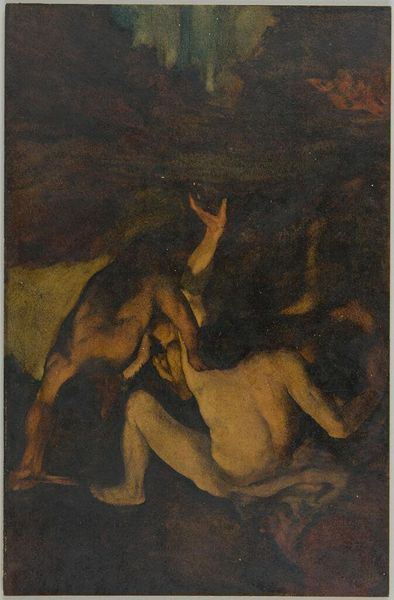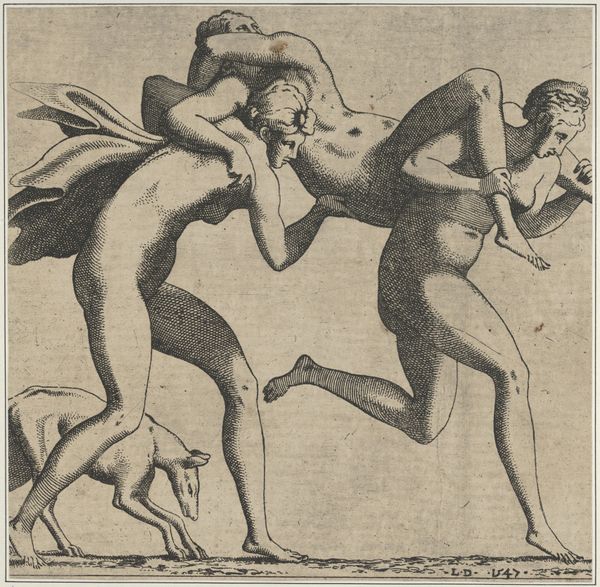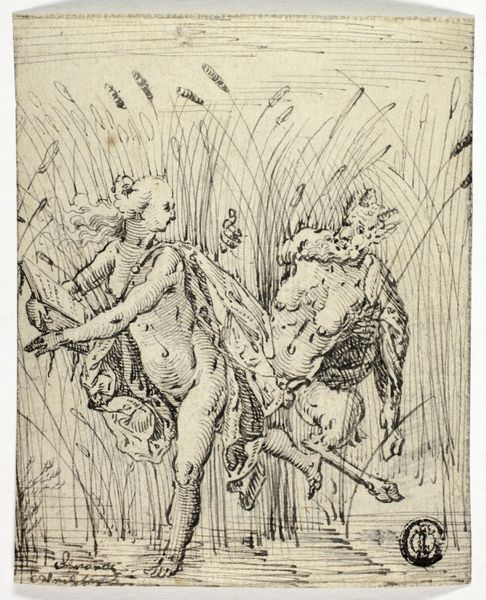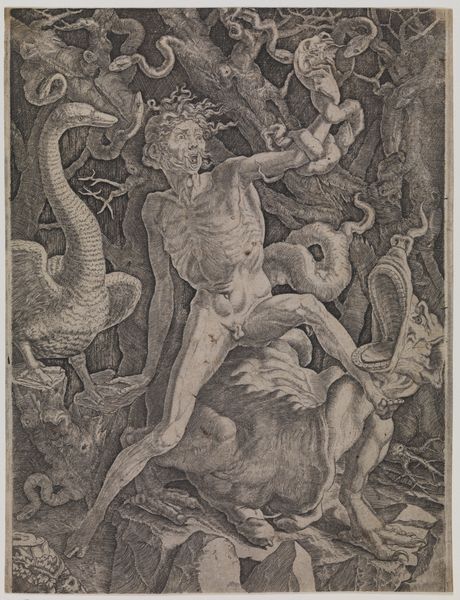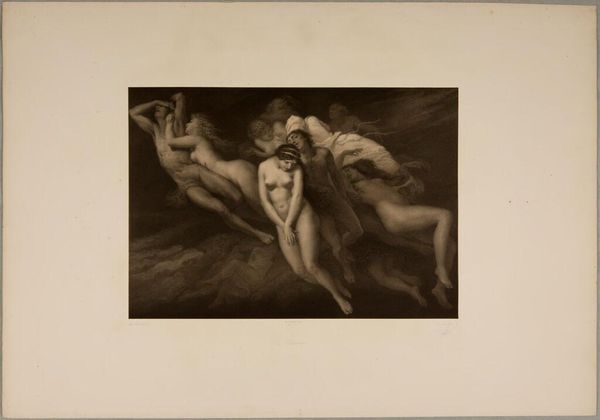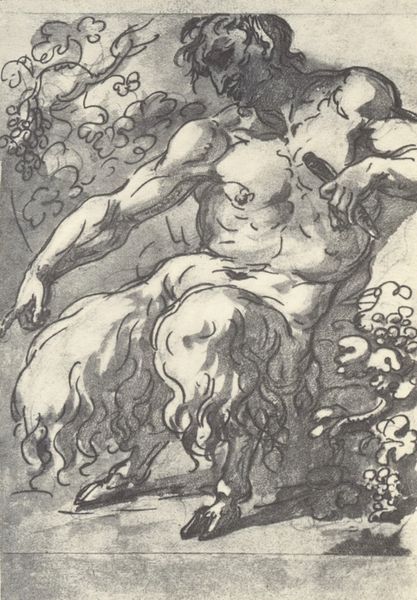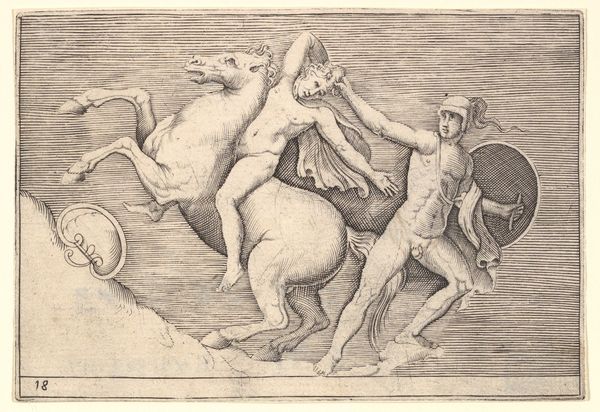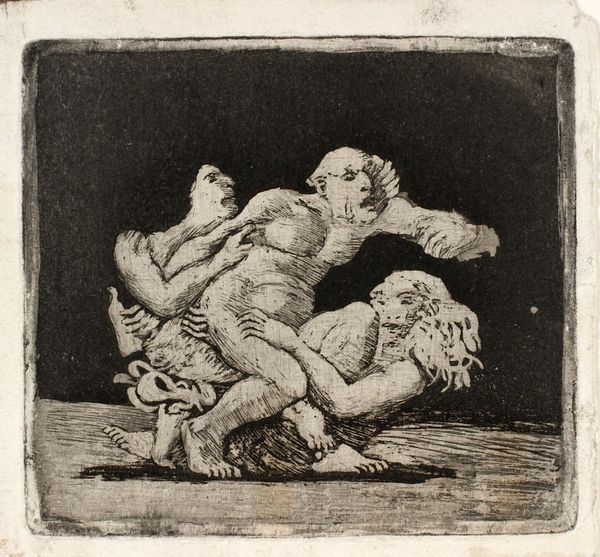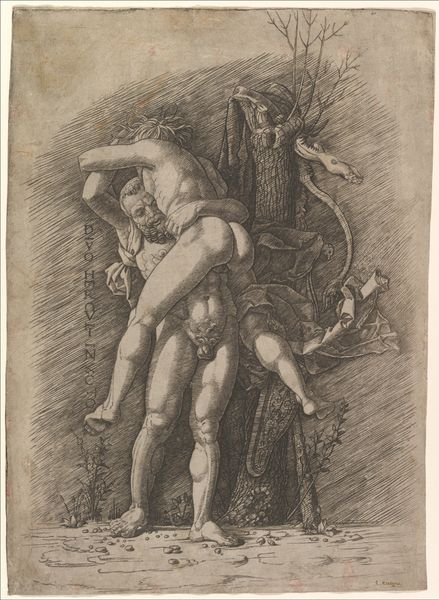
Dimensions: 120 x 120 cm
Copyright: Oleg Holosiy,Fair Use
Editor: This is Oleg Holosiy's "Kiss," painted in 1988 with oil paint. I’m struck by its ghostly, almost ephemeral quality. The figures seem to emerge from the darkness, locked in an embrace. How do you interpret this work, especially given its creation in the late Soviet era? Curator: It’s a powerful piece precisely because of that context. On the surface, it evokes Romanticism with its figures and theme of passionate embrace. But think about the restrictions of the late Soviet period—the repression of identity, of the body, of free expression. Does the indistinctness of the figures speak to a fear of visibility, a need to hide? Are they nude because Holosiy is referencing a broader theme in the art world or because of pushing back on societal gender constraints? Editor: That's fascinating, I hadn’t considered it as a form of resistance. So, you’re saying that what appears to be a classic romantic image could actually be a coded message about personal and political freedom? Curator: Exactly. Consider also the almost desperate embrace. What does it signify to seek closeness, intimacy, in an environment that discourages individuality and questions intimacy between men and women in society? Perhaps Holosiy uses romantic tropes ironically, highlighting the discrepancy between state ideals and the reality of lived experience. This leads us to questions about societal control of one’s sexuality. Editor: So, rather than a simple depiction of love, it’s a complex commentary on identity, censorship, and longing for connection under a restrictive regime? Curator: Precisely. Holosiy layers a recognizable romantic style to push up against restrictions and the complex politics of Soviet ideology and the desire to live a truer more authentic self. Editor: Wow, I see the painting in a completely new light now! Thanks for revealing how context can transform our understanding. Curator: Indeed. Art often acts as a mirror, reflecting and refracting the socio-political realities it emerges from.
Comments
No comments
Be the first to comment and join the conversation on the ultimate creative platform.

